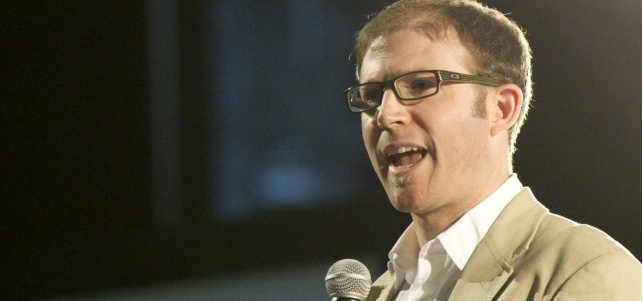The big idea behind CYBF’s Big Idea Labs
by Christine Wong — Jan 17 '14
by Christine Wong — Jan 17 '14

It’s startup mania out there. Startup Canada, Startup Grind and Startup Weekend are just a few of the programs offering advice, pitch sessions and funding opportunities for enterprising young innovators. Despite the frenzy of startup initiatives in recent years, the odds of successfully making the leap from innovation to commercialization still aren’t super-great.
The Canadian Youth Business Foundation is out to change those odds with a series of workshops dubbed The Big Idea Labs. They’re based on the DIY Innovation Toolkit created by Dr. Alex Bruton (who’s known in startup circles as The Innographer). Designed for innovators aged 18 to 39, the workshops touch down in eight Ontario cities starting Jan. 27. We touched base with Dr. Bruton to get the lowdown on the Labs – and find out if ‘innographer’ is, in fact, a real word.
What’s the goal of The Big Idea Labs, especially in terms of possible commercialization?
It’s capacity building to help people develop really big value ideas. We see so many entrepreneurs working on ideas that aren’t either impactful or feasible and this helps them become both impactful and feasible. It’s designed to help them move through that process: from an initial concept, to building a company around science or technology, to accelerating a project to really change the market.
There’s already a flurry of startup programs and events available. Why do we need something like this today?
For every 3,000 raw ideas that pop into people’s heads, only one of those goes on to become a success. Five years later, one third of them have failed. And only five to six per cent of (successful ideas) are high impact. So this is a deliberate approach (to) designing the big impact ideas.
There’s so many entrepreneurs in love with their idea but who may not realize the fairly simply ways they can significantly improve their odds of success. We tell them: when you get the chance, don’t play the odds – change your odds. We give a very specific methodology for changing your odds.
There are two parts to the workshops: The Big Idea Pressure Test and The Big Idea Traction Studio. What’s the difference between them?
The first one is an orientation to a different mindset and way of thinking. It’s getting people to understand those odds of 3,000 to one and really building a toolset. Then they’re required to test those tools and test their concept; that’s where the term Pressure Test comes from. The second workshop, the Traction Studio, is where we try to dig deeper and get traction on the ideas. We exercise the tools and there are three additional tools added to them. The idea of the second workshop is to take them from their starting point to something that’s highly feasible and highly impactful.
Are The Big Idea Labs aimed at a certain type of industry or are they wide open to all sectors?
The CYBF is doing Big Idea Labs to target STEM fields. But my original innovation toolkit – which The Big Idea Labs are based on – is for both tech and non-tech (fields). It’s really designed to be a general tool across all those domains.
The CYBF is only holding Big Idea Labs workshops in Ontario. Will it be expanded to other parts of Canada?
There’s not a current commitment to that right now. Similar tools are offered in different places through my company. But the CYBF’s version is just (offered) in southern Ontario at this point.
The Innographer is the name of your Calgary consulting firm. It’s also become your pseudonym. But is ‘innographer’ a real word?
I made it up, actually. We so often have preconceived notions of what innovation is. I intentionally tried to come up with a word that would be different, to make people think about what it is they’re doing and what their preconceptions are. Where it comes from is ‘innovation’ mixed with the suffix ‘-graphy’, like in ‘photography.’
Would you ever try to trademark the word ‘innographer’? Then you could commercialize a word you innovated…
I do have it trademarked, actually. But I don’t plan to make any money off of it. The goal was just to protect it from being used for other things.
It’s still pretty cool that you trademarked a word.
Thanks, thanks very much.
Christine Wong is a journalist based in Toronto who has covered a wide range of startups and technology issues. A former staff writer with ITBusiness.ca, she has also worked as a reporter for the Canadian Economic Press and in broadcast roles at SliceTV and the CBC.
Twitter LinkedIn Google+
Apr 17 '14

Apr 16 '14

Apr 15 '14

Apr 11 '14
Copyright © 2016 CommerceLab


